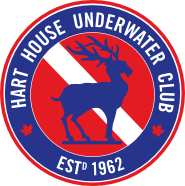by Larry Lundy
Grads spent Monday evenings in the athletic wing of Hart House for exercise classes, volleyball and swimming, all under the auspices of the Grad Committee. Only males were senior members then. Don MacKenzie and several others got together to form a subcommittee for scuba. That was the autumn of 1962. Fifteen grads, as well as four students, were interested. A fellow grad, Jack MacQuarrie, had been a navy diver so Jack was enlisted to coach the others in scuba. After a pool test in May and a demonstration in the pool by the sauna at the Hart House Farm Grad picnic, they went diving at Burleigh Falls.
To get certified this ‘Graduate Underwater Summer Group’ got Ben Davis and George Burt to start training them in the autumn of 1963. Actually, it was Warden Arnold Wilkinson who enlisted his cousin Ben Davis to take us on. Course and tests were to be recognized by both NAUI (National Association of Underwater Instructors) and OUC (Ontario Underwater Council). These dozen trainees underwent pool and written testing and an open water dive at Moores Falls to get the dual certification (1964).
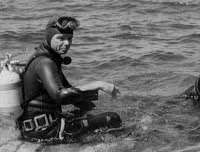
The third year (1964-65) six of us enrolled as trainees of Ben Davis and the next year Don MacKenzie and Dick Booth qualified as instructors to run our winter training program from then on. What was now informally a Club evolved into a subcommittee of the Grad Committee. Peter Williams organized the summer dives.
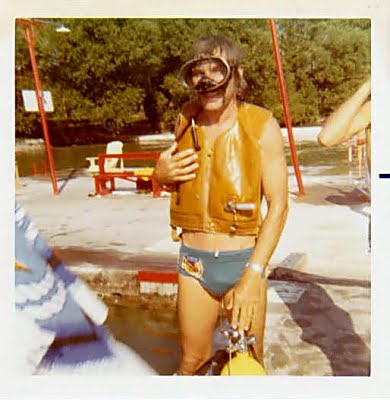
Soon students outnumbered grads in our Club. By 1971 women were becoming Club members thereby instigating a crisis which propelled women to full membership in Hart House. In due course, our Club moved out from under the Grad Committee to become a club like other clubs in this House.
Some of the favorite summer dives were Bala Falls for checkouts, Lake Muskoka for the wreck of the Waome, the wreck of the Maple Dawn off Christian Island with gourmet camping on Hope Island on the long Civic Holiday weekends, more wrecks in the cold waters of Tobermory as well as Sublimnos (underwater habitat of Joe McInnis) and the Caves, the wonderful clarity of the waters around the remote Western Islands far out in Georgian Bay, the fast waters of the French River Thanksgiving weekends, under the falls at Fenlon, the huge wreck of the Eastcliffe Hall in the St Lawrence River near Cornwall and Labor Day weekends at Brockville, wrecks off Picton in Lake Ontario, diving eastern Georgian Bay out of Snug Harbor with prime camping in Kilbear Park, the great wrecks of the Comet and the Marsh in the notorious Gap off Kingston, the Mayflower in Lake Kaminiskeg, drift diving down the Musquash River, camping in Bon Echo Park by Lake Mazinaw, wall diving at Stanley House in Lake Joseph, the muddy bottoms of quarries and Toronto Harbor and wherever we could get wet. And ice diving at Brosz Island in southeastern Georgian Bay. For most of these camping was part of the fun.
In addition to diving, training has been a mainstay of our Club ever since Jack MacQuarrie and Ben Davis got us started. We went on to lead in underwater education. Beyond basic training we have had courses called ‘sport diver’ and ‘advanced diver’, a summer skin diving program for all members of Hart House and their families, orientation at the beginning of each university year, an advanced workshop series, the instructor qualification course, skin diver leader, divemaster and assistant instructor courses, CPR (cardiopulmonary resuscitation) basic and instructor courses, Royal Life Saving Society bronze medallion, Red Cross first aid, even underwater archaeology. In the second decade, our Inner Space Seminars were very popular often filling Great Hall with outstanding presenters from near and far. During reading week, our dive trips to check out trainees in the Caribbean became a feature from 1974 in Cozumel on.
The equipment we had in those early years seems primitive now. We had to suck hard on those single stage two-hose regulators. Over two or three dives we sucked those old steel tanks dry and surfaced gasping for air—none of the underwater gauges that we have now. Underwater lights were big expensive things, shared one per pair of divers. Wetsuits were quite expensive and shared too but in sequence.
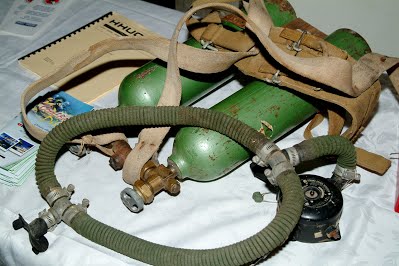
During the dry seasons, we found other things to do. Our pool is ideal for underwater hockey or octopush as it was first called. Our team of Black Harts (better known as the Shaggy Studs) was a strong competitor in the provincial league, and in the early years, was never defeated. We ran an underwater archaeology course, and then an underwater excavation on the 1872 wreck of the John A. MacDonald off Presqu’isle in Lake Ontario. In spring, we competed in the Ice Floe Races down the Otonabee River in Peterborough.
Ours is such a social Club with so many marriages (e.g. three weddings just in the summer of 1973) but no ceremonies underwater yet. Parties were a regular feature. We have had regular president’s, editor’s and dive planning parties — Pool splash, curling, squash, cross country and downhill skiing parties — Annual dinner and dance, annual meeting and elections.
We have always taken pride in leading and promoting safety in our sport. Very early we made buoyancy compensators (life vests) mandatory on our dives. In 1968, with another early start, was our policy of replacing weight belts for free to counteract any tendency to hang on to them in an emergency. When oxygen resuscitators became available, we acquired one to be part of our first aid kit on all our dives. More recently we added a defibrillator.
Who knows what the next sixty years will bring to our Club. May they be as great as the first sixty as we look forward to our next dive.
Teredo Navalis
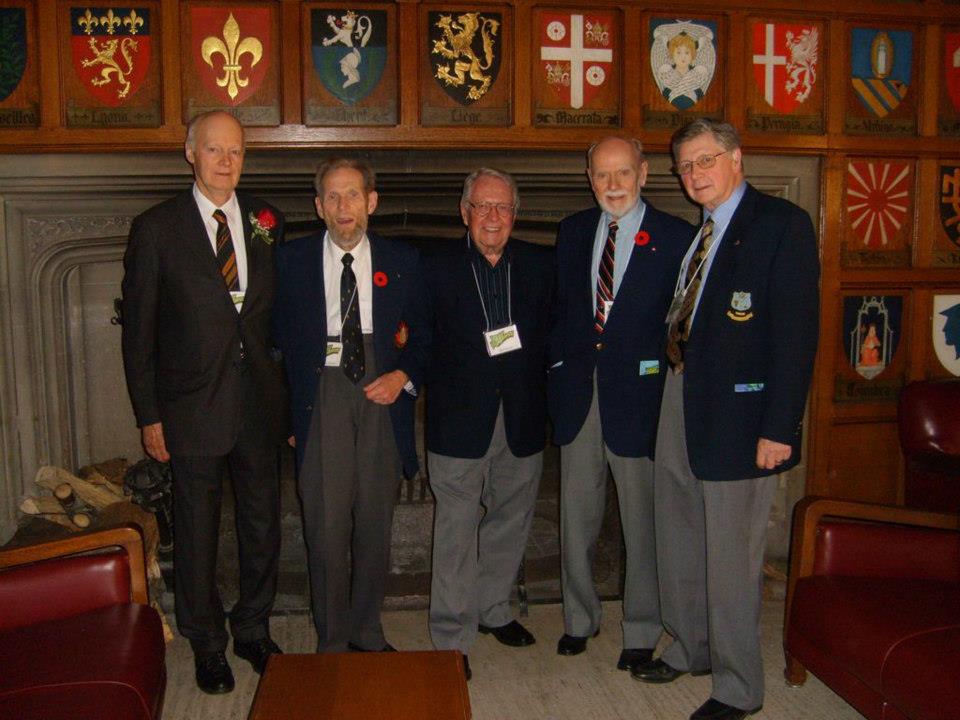
from the 50th Anniversary in 2012

